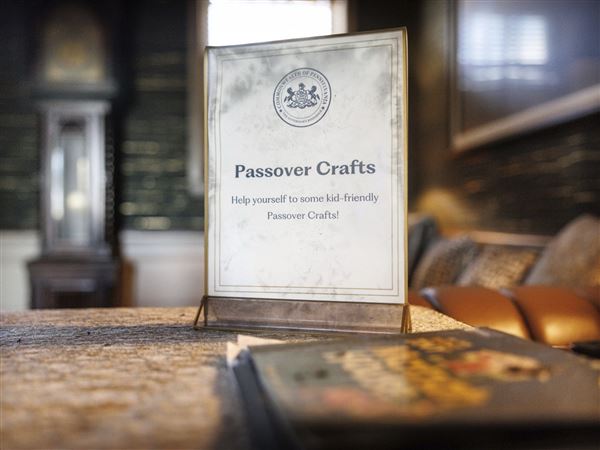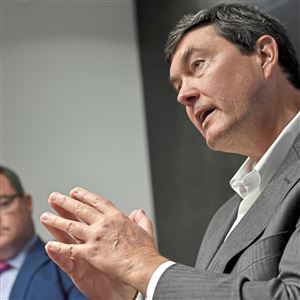When announcing earlier this week that they would indeed pick up Chris Archer’s $8.25 million option for 2020, the Pirates cited how the right-handed pitcher finished this past season when explaining their reasoning behind the move.
“We are encouraged about the progression Chris made in the second half of last season and look forward to him being a part of our rotation in 2020,” interim general manager Kevan Graves said in a statement.
Archer made eight starts in the second half, won none of them and didn’t pitch in September, the result of what Archer described as tendinitis in his right biceps. (The Pirates announced Archer’s season-ending injury as right shoulder inflammation.)
However, there was plenty to like about what Archer did, those reasons guiding the Pirates in their decision to ultimately pick up Archer’s option.
Listed below are educated guesses on a few of them:
The performance improved
Although he did not win any of his starts after the All-Star break, Archer did pitch to a 4.61 ERA compared to a mark of 5.49 before it. That’s not everything, but it is something.
Furthermore, Archer fared much better when it came to home runs and walks allowed and strikeouts accumulated.
Archer allowed 1.10 home runs per nine innings during the unofficial second half to the season, down from 2.29 before the All-Star Game. His walks per nine went from 4.69 to 3.07, while his strikeouts per nine innings jumped from 10.07 to 12.07.
After allowing 20 home runs before the All-Star break, Archer settled down and permitted just five after it.
Opposing batters had what Fangraphs defined as hard contact 31.8% of the time against Archer after the All-Star break compared to 44.2% before it. He also had a much-improved chase rate — 35.5 compared to 29.9.
Why did this happen?
Why Archer pitched better out of the All-Star break is fairly easy to discern: He stopped monkeying around with his sinker and started relying more on his bread-and-butter pitches: a above-average four-seam fastball and devastating slider.
Both pitches defined Archer before he came to the Pirates.
The more frequent and effective usage of his four-seam fastball helped Archer fire first-pitch strikes 66.3% of the time out of the All-Star break, up from 58.9, while Archer achieved more swinging strikes (13.5, up from 12.6) overall.
The change in Archer’s pitch mix was a fascinating month-by-month trend, too.
Through the first three months, Archer threw his sinker 19.6, 20.9 and 9.6% of the time. Opposing hitters, according to Statcast, hit .450, .154 and .545 on the pitch during those months, with the middle one a bit of an outlier where the two hits he allowed were homers that were flat-out crushed (95.4 average exit velocity).
Over the final two months of Archer’s season, he threw just seven sinkers total.
Meanwhile, Archer went from throwing 26.8% four-seam fastballs in May (opposing hitters hit .313) to 49.1% in July and 50.6 in August.
The average velocity of those four-seamers, meanwhile, rose from 93.1 mph to 94.5 over the course of the season, the final two months serving as Archer’s best by a wide margin. Like any pitch, the more you throw it, the better it gets.
Archer’s slider usage remained fairly typical, with the percentage bouncing between 34.5% and 38.2% the entire season, but it was typically not hit very hard when Archer threw it during the second half.
The other stuff
The Pirates also likely picked up Archer’s option for a couple of off-field reasons.
One, even though general manager Neal Huntington was fired, it would’ve been a bad look given what the Pirates gave up to get Archer, especially if he went to another team and suddenly found his groove.
It’s also a fairly reasonable amount of money to pay for an established starting pitcher, a bargain they were not likely to find on the open market.
The third factor could have something to do with the Pirates knowing they need to revamp their entire pitching program, hence the firing of pitching coach Ray Searage.
If the Pirates hire the right guy to succeed Searage, someone who’s a little more modern in his thinking, there’s a good chance Archer could benefit from a little more preparation work and game-planning.
It should also be taken into consideration that a new catcher in 2020 could positively affect the results that Archer is able to achieve.
In the end, given how Archer’s season transpired, it should’ve been a fairly easy move, especially when you consider the Pirates’ other available options.
Jason Mackey: jmackey@post-gazette.com and Twitter @JMackeyPG
First Published: November 7, 2019, 6:42 p.m.




















